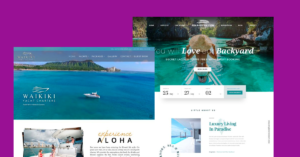Navigating the Transition: From UI to UX Design
Introduction:
In the ever-evolving landscape of digital design, the shift from UI (User Interface) to UX (User Experience) Design has become a pivotal journey for designers seeking to create more meaningful and user-centric products. This blog explores the nuances of this transition, offering insights, tips, and inspiration for those embarking on the path of UX design.
Understanding the Core Differences:
Begin by delving into the fundamental disparities between UI and UX design. UI focuses on the look and feel of the interface, while UX encompasses the entire user journey, including interactions, emotions, and overall satisfaction. Explore real-world examples to illustrate these distinctions and highlight the importance of user-centered design.
Embracing a Holistic Approach:
Switching from UI to UX design requires adopting a more holistic mindset. Encourage readers to broaden their perspectives beyond aesthetics and consider the entire user experience. Illustrate the impact of seamless navigation, intuitive interactions, and thoughtful user flows on the overall success of a product.


Building Empathy for Users:
One of the key elements of successful UX design is the ability to empathize with users. Share techniques for conducting user research, creating personas, and developing a deep understanding of the target audience. Discuss how this empathy-driven approach enhances the decision-making process and ultimately leads to more user-friendly designs.
Mastering UX Tools and Techniques:
Guide readers through the essential tools and techniques in the UX designer’s toolkit. Explore wireframing, prototyping, usability testing, and other UX methodologies. Offer practical advice on integrating these tools into the design process, emphasizing their role in creating user-centered solutions.
Collaborating with Cross-functional Teams:
Highlight the collaborative nature of UX design by emphasizing the importance of working closely with cross-functional teams. Discuss the benefits of interdisciplinary collaboration and share anecdotes or case studies that showcase successful teamwork in the context of UX design projects.
Staying Updated on Industry Trends:
The field of UX design is constantly evolving, with new trends and technologies shaping the landscape. Encourage readers to stay informed about emerging UX trends, tools, and best practices. Recommend reputable resources, conferences, and communities where designers can continue learning and growing in their UX journey.
Conclusion:
The transition from UI to UX design is a transformative journey that requires a shift in mindset, skillset, and approach. By embracing a holistic perspective, building empathy for users, mastering UX tools, collaborating with cross-functional teams, and staying updated on industry trends, designers can navigate this transition successfully. As the digital landscape continues to evolve, the role of UX design will become increasingly crucial in creating products that resonate with users on a deeper level.
If you need more clarification contact us



